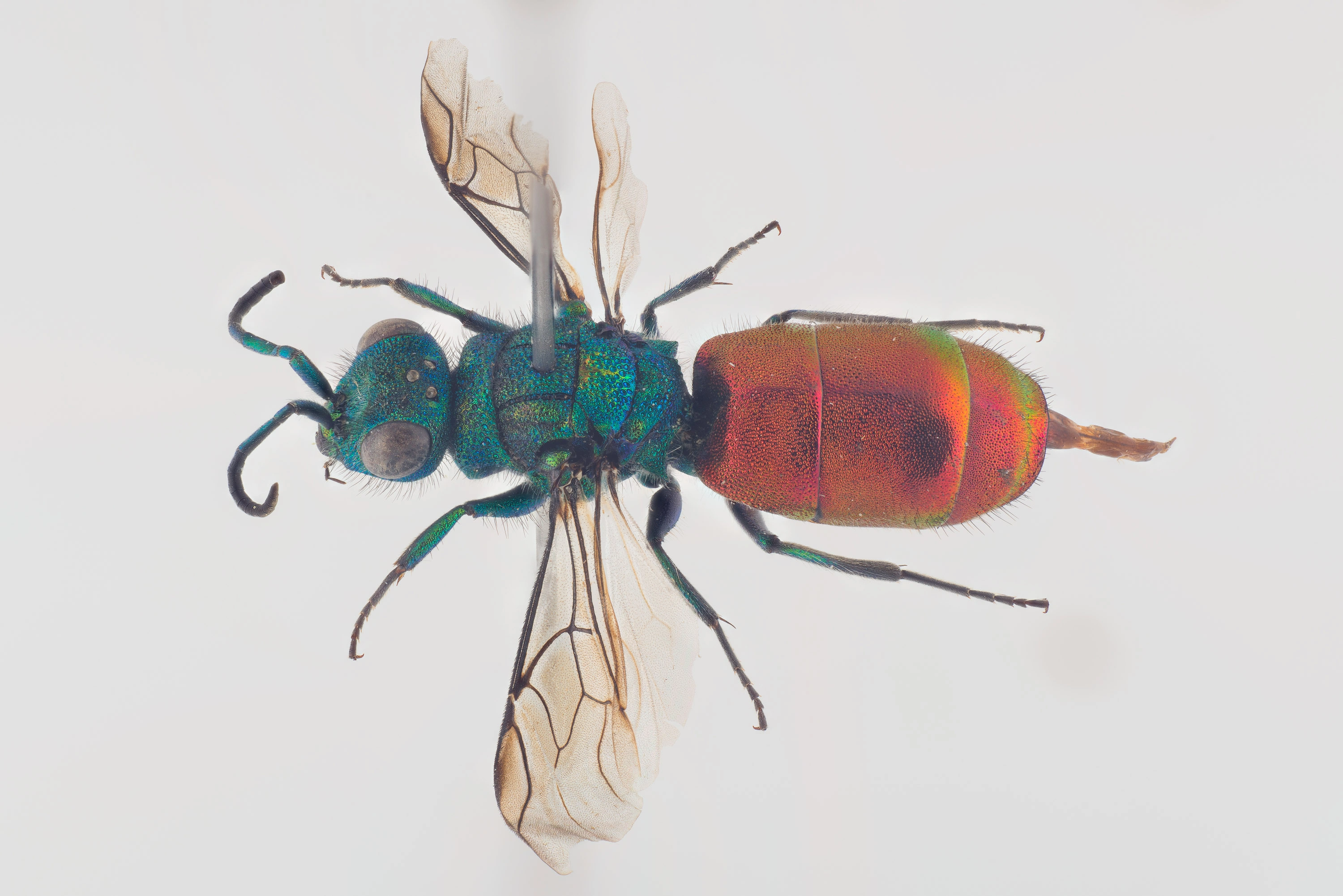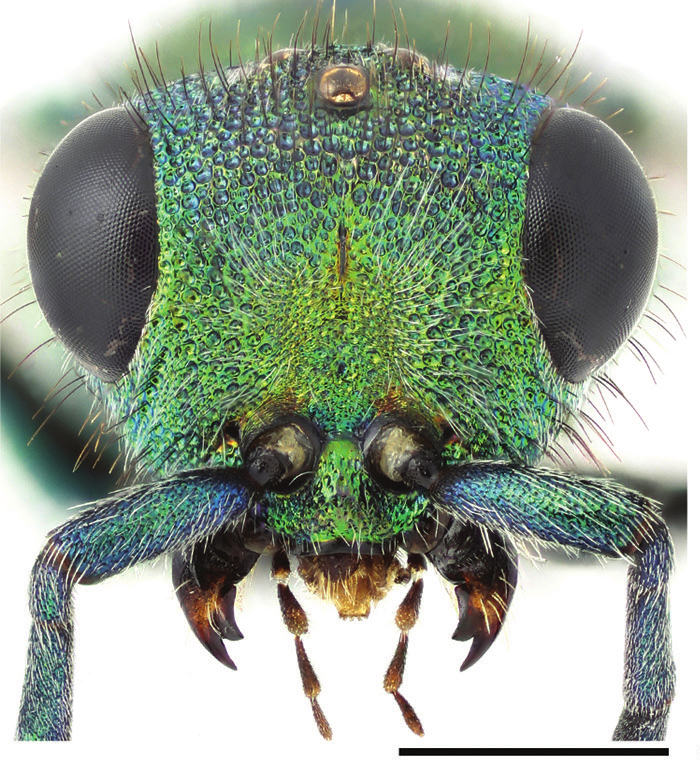Chrysura hirsuta
A relatively common species in forests as well as coastal habitats. The hosts are different species of mason bees Osmia. The genus can be recognized by the lack of a frontal carina and the lack of apical teeth along hind margin of T3. C. hirsuta can be separated from C. radians by the long dark hairs of T3, and the denser punctation of the tergites.
- Innhold
- Diagnosis
- Distribution
- Biology
Diagnosis
Figure 202
Head, frontal view: C. hirsuta ♀. Scale 1 mm.
Figure 203
Metanotal tooth, dorsal view: C. hirsuta ♀. Scale 1 mm.
Figure 208
Metasoma, dorsal view: C. hirsuta ♀. Scale 1 mm.
Length 7–11 mm.
The species resembles other similarly coloured species of Chrysura, but the metascutellum is flatter (not sharply elevated as in C. trimaculata), the punctation of the tergites is homogeneous and dense (Fig. 208) (not heterogeneous as in C. radians) and the mandible has a large subapical tooth (Fig. 202) (tooth lacking or small in C. austriaca). The head and mesosoma are dark green or blue, often with golden green reflections, whereas the metasoma is golden red or rarely golden greenish.
Distribution
Estonia, Finland, Lithuania, Norway, Sweden. Relatively rare.
Trans-Palearctic: from western Europe to China, Korea and Japan (Linsenmaier 1959, Rosa et al. 2014).
Be aware that the records present in the GBIF map may be misleading for some countries due to unrevised data sets or missing information.
GBIF Taxon: Chrysura hirsuta (Gerstaecker, 1869)Biology
Habitat: dry meadows, forest margins and clearings. Adults are often found flying near the ground, rocks or dead wood (Linsenmaier 1959, 1997, Rosa 2006).
Flight period: April to July. A female specimen, collected at the end of September in SW Finland, might belong to a second generation.
Host: Osmia inermis (Zetterstedt), O. nigriventris (Zetterstedt), O. parietina Curtis, O. spinulosa (Kirby), O. uncinata Gerstaecker, and Hoplitis tuberculata (Nylander) (Megachilidae) (Smith 1862, Trautmann 1918, Trautmann 1927, Morgan 1984, our own obs.). Host records mentioning bees of other genera, e.g. Chelostoma florisomne (Linnaeus) (Megachilidae) (Frey-Gessner 1887), are questionable as supporting evidence is lacking.



